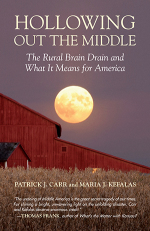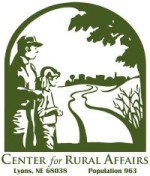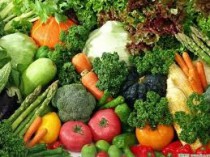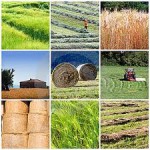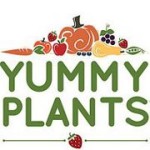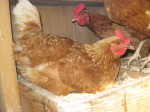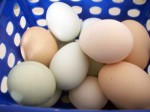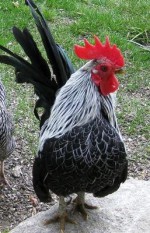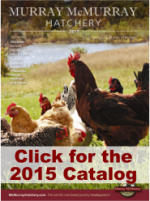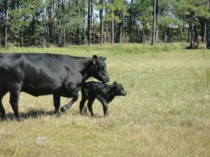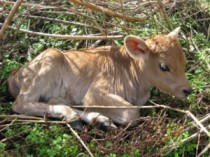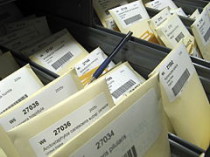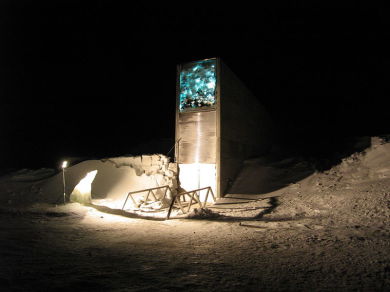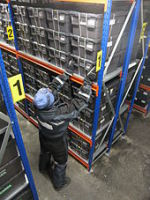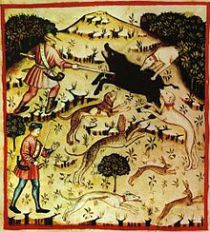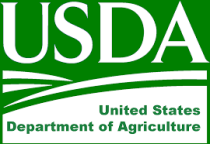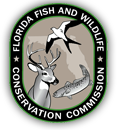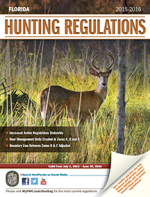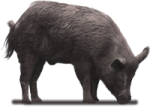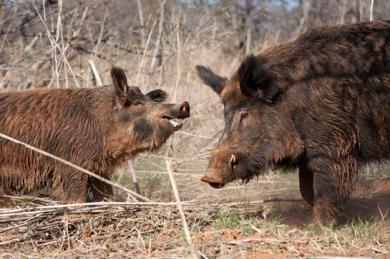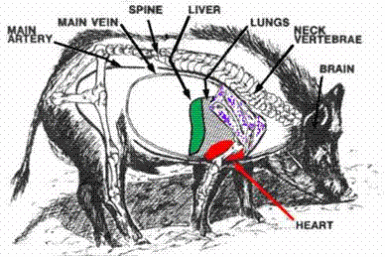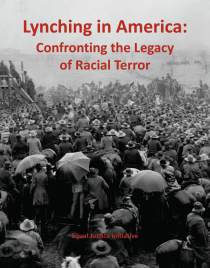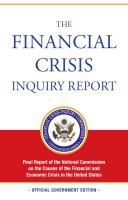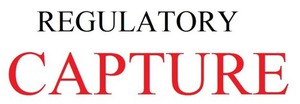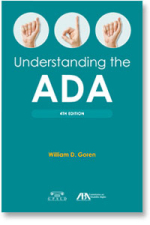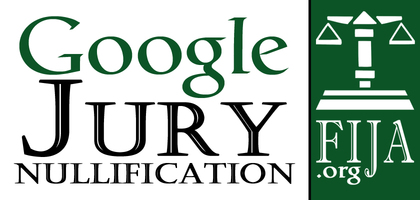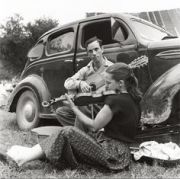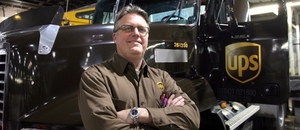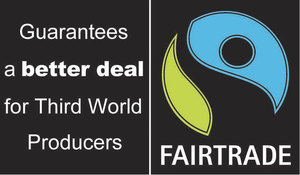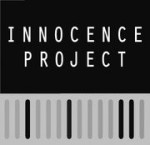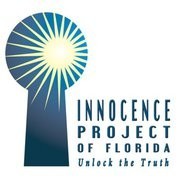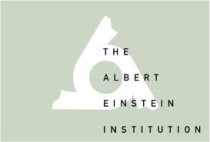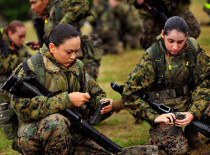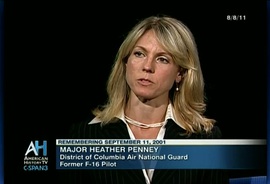...........................Food - Living The Good Life.........................
Hollowing Out the Middle. The Rural Brain Drain and What It Means for America
Startling research shows that small towns from Maine to Missouri are in jeopardy from exporting their most precious resource: young people.
In 2001, with funding from the MacArthur Foundation, sociologists Patrick J. Carr and Maria J. Kefalas moved to Iowa to understand the rural brain drain and the exodus of young people from America’s countryside. Articles and books notably Richard Florida’s The Rise of the Creative Class celebrate the migration of highly productive and creative workers to key cities. But what happens to the towns that they desert, and to the people who are left behind?
To answer that question, Carr and Kefalas moved to "Ellis," a small town of two thousand. Ellis is typical of many places struggling to survive, and Iowa is typical of many states in the Heartland, aging rapidly. One reason is that many small towns simply aren’t regenerating, but another is that its educated young people are leaving in droves. Read more
Center for Rural Affairs
Beginning Farmer and Rancher Opportunities
New farmers are quickly becoming a rarity, and these days, it can be hard to get started. Yet exciting opportunities exist in farming and ranching, especially for those
who capture the growing consumer interest in healthy food and stewardship of our natural resources. Anyone with interest can become a new farmer - there is no age limit on pursuing an interest in
farming or ranching. Read more
Center for Rural Affairs, Facebook
New Farmers Find Their Footing
The New York Times
By MARK BITTMAN
August 16, 2011
North Haven, Me.
When Brenna Chase was farming in Connecticut a few years back, new farmers weren’t always welcome by oldsters. The pie, she says, just wasn’t big enough. "But now," she
said to me here, where she now farms, "the feeling is that the pie is getting bigger and that the more people that get into this the better it will be for everyone."
By "this," she means sustainable farming (here I use the term interchangeably with "organic" because many ethical farmers can’t afford organic certification), and the
poised 33-year-old, who began farming in high school, is representative of young people I’ve met all over the country. These are people whose concern for the environment led to a desire to grow — and
eat — better food. And although chefs still get more attention, the new farmers deserve recognition for their bold and often creative directions. Read more
NYTimes.com - April 23, 2008
Life (Mostly) Off the Grid
The Dervaes are living the green life in Pasadena, Calif.
Wikipedia links
Yummy Plants is a community to support people interested in exploring a plant-based diet. Whether you are a vegetarian, a new vegan, or just looking to add more vegetables to your diet, this is the place for you to share your thoughts and ideas. more
Yummy Plants Facebook
Permaculture!
http://www.permies.com/
A tour of temporary and permanent outdoor kitchens. Includes cobville, O.U.R. Ecovillage, the bullock brothers farm, lost valley and others. Outdoor kitchens don't have
to me elaborate and/or expensive. Plus, these outdoor kitchens are keyed more to communities and groups. Outdoor kitchens are also a great place for canning and processing the fall harvest on the
farm. Salatin uses an outdoor kitchen for processing all of his chickens.
Outdoor kitchens are an excellent way to feed those farm interns! This video includes a lovely cob oven and cob bench. http://www.permies.com/
Alexia Allen of Hawthorn Farm is a wilderness skills instructor who also has a small farm in Woodinville, Washington. I thought she did a really good job of
demonstrating a respectful harvest of a chicken. Read more
Respectful Chicken Harvest Part 2 of 2
$3 million government subsidy for farm, business!
Government money may be available for certain farm and business ventures. Republican Kristi
Noem, the U.S. Rep. for South Dakota's At-large district, and new Tea Party Princess, benefited from government subsidies. Noem’s family farm received over $3 million dollars in subsidies from the
United States.
From Wikipedia: "The property has also received $3,058,152 in USDA farm subsidies from 1995 through 2009. Over the years, Noem added a hunting lodge and restaurant to the
property, and all of her siblings have moved back to assist in expanding the businesses." Read more
Apeckalypse
Twin Oaks Community
Submitted by Ethan
November 30, 2011
By Janel Twin Oaks
In just a matter of weeks, Twin Oaks’ 150 laying hens have become frozen fodder for future community meals.
It all started late in the summer when new member Sapphyre and I decided to fill the much-needed poultry management position. We started doing research about proper
chicken care--and the answers we found left us shocked. Suddenly, aspects of our fenced-in chicken yard that once seemed benign to my untrained eye began to pop out at me--the lack of top soil due to
vegetation depletion, for instance, or the broken feathers on birds’ backs (indicating a possible feather mite infestation). Not to mention we realized that many of the hens were too old to
efficiently produce eggs anymore.
Coincidentally, around that time I began devouring The Omnivore’s Dilemma at Valerie’s recommendation, and the picture that animal-pasturing expert Joel Salatin painted
of a "happy chicken" began to haunt me. In the book, Salatin tells author Michael Pollan that fowls were meant to flit from area to area, scratching and pecking at the ground for bugs and tasty
weeds. They were not meant to be confined, eating nothing but industrially-farmed corn and grains. Of course! Learning this was like unlocking a primordial instinct in me that had long been buried by
civilization. After much deliberation and a few tears, Sapphyre and I decided the best thing to do would be to kill the birds and start over in the spring, hopefully purchasing eggs from local
farmers until a Twin Oaks pastured poultry program is fully underway.
Luckily, we had former Oakers Jim and Shana to turn to. Jim and Shana dabbled in raising poultry for profit and built an impressive slaughtering station in their back
yard--which happens to be two miles from the community. In exchange for LEX hours (labor IOU’s traded between communities) and a few chickens, Jim and Shana agreed to help us turn the entire flock
into tomorrow’s main course, 50 birds at a time. Thus, every Monday in October became a meat processing field trip.
Halloween day marked our final slaughter with Jim and Shana. The air was warm and crisp as June, Valerie, Kele and I took off down the road, five pens of chickens in tow.
Once at Jim and Shana’s, I stood next to the crowded cages of birds awaiting their fate and surveyed the scene: the upside down traffic cones in which the birds would "bleed out," the de-feathering
machine, the stainless-steel evisceration table. Trying to calm myself in the face of the lurking question, "Is this the right thing to do?," I put my hand on a pen and whispered a thank you to the
birds whose bodies would feed me throughout the winter. Then, I moved to my position at the evisceration table.
A couple hours later, 50 carcasses were cooling in vats of ice water, and Kele, Valerie, Shana and I were peeling the tough inner tissues from gizzards to prepare them
for consumption. Our rambling conversation turned to the subject of birth and as I listened to the others swap stories of the human births they’d experienced, I was struck by the irony of discussing
new life on a day of death. Yet the subject was comforting. It reminded me that spring will bring with it a rebirth of the Twin Oaks poultry program -- and that I’m a part of that rebirth. I took a
deep, healing breath, and I allowed myself to smile. Read more
Krewe De Food host John Cassidy
takes us through the basic points of building an urban flock. Stop by Hollygrove Market and Farm on Saturdays from 10-2 to visit the chickens. Read more
Krewe De Food host John Cassidy showing 2 of the most humane ways of killing chickens and processing them. As John says, "It's not fun... but it's how life goes on without Walmarts."
David Aman of Krewe De Food made this point on the KDF
Chicken Killing Demonstration blog post:
"Everyone who eats meat should participate periodically in its killing. If you're not a vegetarian then do yourself a favor and eat something that you kill. There would
be a lot less meat consumption if us omnivores were a little more attached to the killing portion of our meat consumption. The industrialization of our food is doing something to our subconscious;
can't say exactly how it has and will effect us but it can't be good.." Read
more
Murray McMurray Hatchery supplies the small farmer, rural egg producer and chicken enthusiast with a wide variety of day-old baby chicks, pullets, ducklings and much more. It is gratifying to watch your baby chicks grow from newly hatched to adult, ready to entertain you in every way - not to mention harvesting eggs and meat that you have grown yourself. Read more
McMurray Hatchery on Facebook
- Urban chicken Wikipedia
This is what dinner looks like
Matt Weidner, Fighting With The American People
October 29th, 2011
I just love getting out into the sticks and the rural areas of the country. And what I hear from the farmers scares the hell out of me. But more of that later. This
beautiful fella pictured there is my cow. He’s smiling because he’s happy and calm, living out in beautiful fields with all his family and friends. And the little fella right below here, well he’s
about a day old, still wobbly on his little paws, his hide still damp from being inside his momma right there.
The pasture itself is apparently quite extraordinary….we traveled for miles and miles past hundreds of acres of similarly looking pasture, but the those fields don’t have
that special mixture of grass found right here in this little bovine heaven where these guys and gals live. The mommas live quite a life…they’re prized possessions passed down through generations of
Florida ranching royalty. Only the finest male gentlemen callers with the finest pedigree are allowed near these ladies….no stressed out large herd stocks here…this is small scale, specialty
farming at its very finest. A kind of beautiful Florida cracker tradition that’s kind of slipping away. We’ll keep visiting and getting to know the little fella and his family and then
one day a few months from now we’ll see him again, only he’ll be wrapped up all neat and tidy….in a couple hundred small plastic packages. And yes, we named him….his name is Dinner. Read more
Heart of the Garden Farm
Our Farm of Loving Intention
John 13:34-35 "A new commandment I give to you, that you love one another, even as I have loved you, that you also love one another. By this all men will know you are My
disciples, if you have love for one another." Read more
Meet our new calf…Bull Winkle. Born Feb 2, 2010.
Wikipedia
A seed bank (also seedbank or seeds bank) stores seeds
as a source for planting in case seed reserves elsewhere are destroyed. It is a type of gene bank. The seeds stored may be
food crops, or those of rare species to protect biodiversity. The reasons for storing seeds may be varied. In the case of food crops, many useful plants that were developed over centuries are now no longer used for commercial
agricultural production and are becoming rare. Storing seeds also guards against catastrophic events like natural
disasters, outbreaks of disease, or war. Unlike seed
libraries or seed swaps that encourage frequent reuse and sharing of seeds, seed banks are not typically open to the
public. Read more
New Survival Seed Bank Lets You Plant A Full Acre Crisis Garden
Svalbard Global Seed Vault - Norway
Svalbard Global Seed Vault
Wikipedia
The Svalbard Global Seed Vault (Norwegian: Svalbard globale frøhvelv) is a secure seed bank on the Norwegian island of Spitsbergen near Longyearbyen in the remote Arctic Svalbard archipelago, about 1,300 kilometres (810 mi) from the North Pole.[4] Conservationist Cary Fowler, in association with the Consultative Group on International Agricultural Research (CGIAR),[5] started the vault to preserve a wide variety of plant seeds that are duplicate samples, or "spare" copies, of seeds held in gene banks worldwide. The seed vault is an attempt to insure against the loss of seeds in other genebanks during large-scale regional or global crises. The seed vault is managed under terms spelled out in a tripartite agreement between the Norwegian government, the Global Crop Diversity Trust (GCDT) and the Nordic Genetic Resource Center (NordGen).[6]
The Norwegian government entirely funded the vault's approximately NOK 45 million (US$9 million) construction.[7] Storing seeds in the vault is free to end users, with Norway and the Global Crop Diversity Trust paying for operational costs. Primary funding for the Trust comes from such organisations as the Bill & Melinda Gates Foundation and from various governments worldwide.[8]
Hunting for food
Hunting
Wikipedia
Hunting is the practice of killing or trapping any animal, or pursuing it with the intent of doing so. Hunting wildlife or feral animals is most commonly done by humans for food, recreation, or trade. In present-day use, lawful hunting is distinguished from poaching, which is the illegal killing, trapping or capture of the hunted species. The species that are hunted are referred to as game and are usually mammals and birds.
Hunting can also be a means of pest control. Hunting advocates state that hunting can be a necessary component[1] of modern wildlife management, for example, to help maintain a population of healthy animals within an environment's ecological carrying capacity when natural checks such as predators are absent.[2] However, hunting has also heavily contributed to the endangerment, extirpation and extinction of many animals.[3]
The pursuit, capture and release, or capture for food of fish is called fishing, which is not commonly categorised as a form of hunting. It is also not considered hunting to pursue animals without intent to kill them, as in wildlife photography or birdwatching. The practice of foraging or gathering materials from plants and mushrooms is also considered separate.
Skillful tracking and acquisition of an elusive target has caused the word hunt to be used in the vernacular as a metaphor, as in treasure hunting, "bargain hunting", and even "hunting down corruption and waste". Read more
U.S. Department of Agriculture
National Agricultural Library
Invasive Species - Wild Boar
Scientific name: Sus scrofa Linnaeus, 1758 (ITIS)
Common name: Wild boar, wild hog, feral pig, feral hog, Old World swine, razorback, Eurasian wild boar, Russian wild boar. Read more
A PICKUP LOAD OF PIGS addresses the issue of wild pigs (Sus scrofa) as a nuisance species of growing concern. The film discusses the biology, behavior, and distribution of wild pigs, and the damage and threats they present to native wildlife, agriculture, forestry, and public health in the United States. It also provides landowners with instruction of legal methods for controlling wild pig populations and damage on their property. Finally, the film demonstrates to policy makers and the general public that wild pigs are in fact a nuisance species that cause considerable ecological and economic damage (current estimates = $1.5 Billion annually). Mississippi State University. (YouTube)
The Fish and Wildlife Conservation Commission came into existence on July 1, 1999 - the result of a constitutional amendment approved in the 1998 General Election as part of the package proposed by the Constitution Revision Commission.
Hunters with Disabilities The FWC wants to ensure that physical disabilities do not get in the way of a person's access to hunting opportunities. The links below connect you to information about various accommodations and opportunities for sportsmen with disabilities to enjoy hunting in Florida.
The Hunting Handbook summarizes the hunting regulations for private and public lands. The FWC also cooperates with other landowners to establish wildlife management area (WMA) regulations.
Introduction
This publication is provided as a guide to Florida hunting laws and regulations; however, the Wildlife Code of the State of Florida is the final authority on hunting laws. The Florida Wildlife Code, Division Number 68A of the Florida Administrative Code, can be obtained at flrules.org.
The FWC strives to ensure the information in this publication is accurate but assumes no liability for substantive or typographical differences between this publication and the Florida Administrative Code. If you have questions regarding hunting laws and regulations, contact a FWC regional office.
Hunting by species: Wild Hog - no permit required
The wild pig (Sus scrofa), also called the wild hog, wild boar or feral pig, is not a Florida native and may have been introduced by Spanish explorer Hernando DeSoto as early as 1539.
They occur in all of Florida's 67 counties within a wide variety of habitats, but prefer oak-cabbage palm hammocks, freshwater marshes and sloughs and pine flatwoods. Wild pigs can reach weights of more than 150 pounds and be 5-6 feet long. They usually travel in small family groups or alone.
Wild pigs are omnivorous (eating all kinds of foods, both plants and animals) and feed by rooting with their broad snouts. They may cause disturbance of the soil and ground cover vegetation and leave the area looking like a plowed field. Read more
2015-2016 Florida Hunting Season Dates (PDF)
Wild hog Statewide
Year-round by all legal rifles, shotguns, muzzleloaders, crossbows, bows and pistols. Hunting license not required. Wild hogs also may be trapped but cannot be transported alive without permit from the Florida Dept. of Agriculture at 850-410-0900. (D)
Bag Limit: No Limits
Pig Hunting Tips: How to Call in Wild Hogs
Pig Hunting Tips: How to Call in Wild Hogs
Outdoor Life, Hunting
by Russell A. Graves
From 600 yards away, I could see the spotted feral pigs moving purposefully and predictably toward a creek bottom choked with thick kochia. For most animals, this 5-acre flat of clothes-grabbing brier is a dead zone too thick to negotiate, and the invasive rangeland weed provides scant nutritive value. For the countless feral pigs on this northwest Texas ranch, the kochia flat is home, sweet home.
Inside the weed patch is a labyrinth of tunnels and nests that the pigs use for bedding and brooding young. Once they’re in, there’s not much chance of getting them out—unless you think like they do.
Wild pigs are notoriously territorial and aggressive when threatened. Their tendency for fight over flight when directly threatened is legendary. You can use that trait against them and put more hogs on the ground by calling to them rather than chasing them. Read more
Where to Shoot a Wild Boar Hog, and How Much Gun to Use
By Russ Chastain
Hunting Expert
Boar Hogs Aren't Built Like Deer, But Many Hunters Don't Realize That
Many hunters take to the woods each year in pursuit of wild boars (hogs). This is a good thing - it's nice to stay in practice when it's not deer season, the meat is nice in the freezer, and wild boars can be a real nuisance in many areas. Many of the folks running around the woods after hogs are primarily deer hunters, and don't really know just where to shoot a hog to get its vitals. The sort of shot placement that works great for deer might not do so well on a hog.
Where are its vitals? We're about to answer that question.
Take a look at the image of the hog on this page. It may be a little too small for you to read; if so, try this link. Here, the deer hunter will notice that a hog's lungs are well forward, and if he were to place a shot as he would for a lung shot on a deer, the result would almost certainly be a gut shot. Not good!
Best Shots
Ideally, a shot on a broadside boar should be placed in the shoulder area, and lower is preferable. Just be careful not to aim so low that you shoot under the swine. If the animal is quartering towards or away from you, you'll want to place the shot so the bullet will end up in the vitals between the shoulders. Naturally, this requires a bullet that will penetrate well.
Much talk has been put forth about shooting hogs in the head, and that can definitely be a killing shot, provided you hit the brain. Make note of the fact that a hog's brain is a small target, and is well protected by its thick skull. Here again, a tough bullet with good penetration is key. Read more
How to hunt wild hog is shown on YouTube videos. Wild hogs are destructive and detrimental to all native wildlife. If not for hunting, they will destroy some of our natural resources. As a nuisance animal, hunting wild hogs does not present the same ethical concerns as hunting other wild animals.
Wild hogs can provide food for the table and freezer. Wild hogs can grow fairly large and the big ones can provide a substantial amount of meat. Field dressing wild hogs may be more involved as there appears to be conflicting opinions, see the YouTube videos.
Hunting and eating wild hog is not for everyone, especially if prohibited by your faith. However anyone who lives in a rural area may encounter wild hogs, so it is good to know about them. The last YouTube videos discuss trapping nuisance wild hogs alive.
- Hunter takes 549-pound wild hog, website reports
Wild boar
Wikipedia
The wild boar (Sus scrofa), also known as the wild swine[3] or Eurasian wild pig[4] is a suid native to much of Eurasia, North Africa, and the Greater Sunda Islands. Human intervention has spread its range further, making the species one of the widest-ranging mammals in the world, as well as the most widely spread suiform.[4] Its wide range, high numbers, and adaptability mean that it is classed as least concern by the IUCN.[1] The animal probably originated in Southeast Asia during the Early Pleistocene,[5] and outcompeted other suid species as it spread throughout the Old World.[6]
As of 2005, up to 16 subspecies are recognised, which are divided into four regional groupings based on skull height and lacrimal bone length.[2] The species lives in matriarchal societies consisting of interrelated females and their young (both male and female). Fully grown males are usually solitary outside of the breeding season.[7] The grey wolf is the wild boar's main predator throughout most of its range except in the Far East, where it is replaced by the tiger.[8] It has a long history of association with humans, having been the ancestor of most domestic pig breeds and a big-game animal for millennia. Read more

